Madrid is an impressive city and the political center of Spain. The city in the middle of the Iberian Peninsula has been Spain’s unifying political entity for centuries, and the status as an imperial capital for centuries has put its distinct mark on the city with numerous grand buildings, sqaures, monuments and more, with the Royal Palace as one of the absolute highlights.
Tourists can enjoy the blend of magnificent historical greatness and the typical Spanish-Mediterranean atmospheric that is prevailing here. You should not miss out the narrow streets and fine squares of old Madrid near the famous Puerto del Sol and Plaza Mayor. And just next to the old neighborhood, you can stroll Gran Via with all it shopping and distinguished architecture.
Madrid is both a city of great buildings and monuments and a city where visitors come to enjoy the unforgettable art museums including the Prado Museum. The great European masters are innumerable in several museums, and close by there are beautiful parks to walk while digesting the impressions from the museums, or to meet the locals who spend a lot of time in the city’s green oases.
Madrid is also home to several major football teams including history’s most successful club, Real Madrid, and you can always check out if there are upscoming matches when visiting the city. You can also choose to make a day trip from the Spanish capital. The city of Toledo, El Escorial and Valle de los Caidos are great choices.
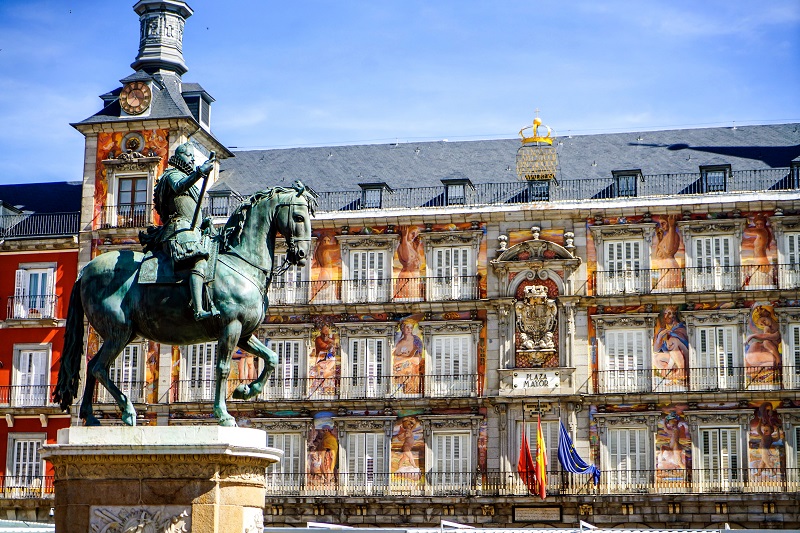
Plaza Mayor is one of the most beautiful squares in Europe from its time. The rectangular square measures 129×94 meters/423×308 feet and was designed in 1581, when King Philip II wanted to redevelop the area. However, the beautiful architecture that can be seen today is from the 18th century.
Puerto del Sol is a square that forms the center of Madrid, and here is always a lively atmosphere. Puerto del Sol means the Sun Gate, and it was the name of the historic city gate that from the 15th century formed the eastern entrance of the city.
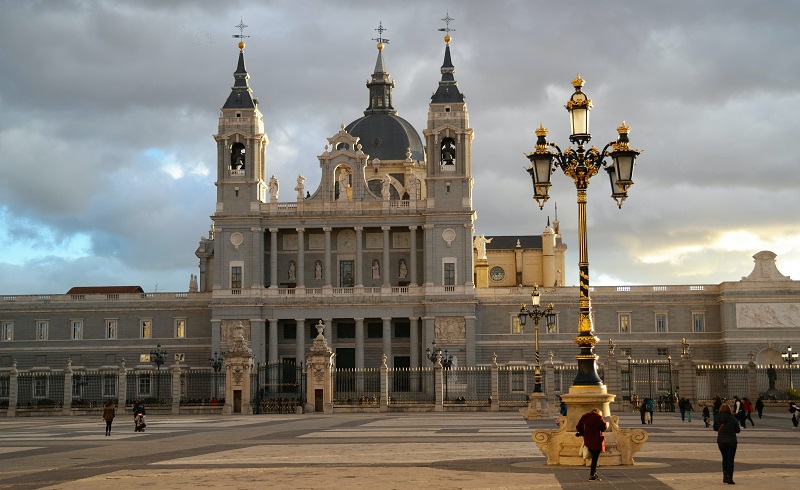
This is Madrid’s impressive cathedral, built from 1879 and consecrated in 1993. The interior is a modern version of Neo-Gothic architecture, while the exterior architecture is inspired by the Baroque.
Prado is one of the world’s leading art museums. The museum is world-class with the collection of paintings and sculptures, and there are works by countless European masters in the collection; eg Goya, Rembrandt, Rubens, Raphael, El Greco, Titian and Velázquez.
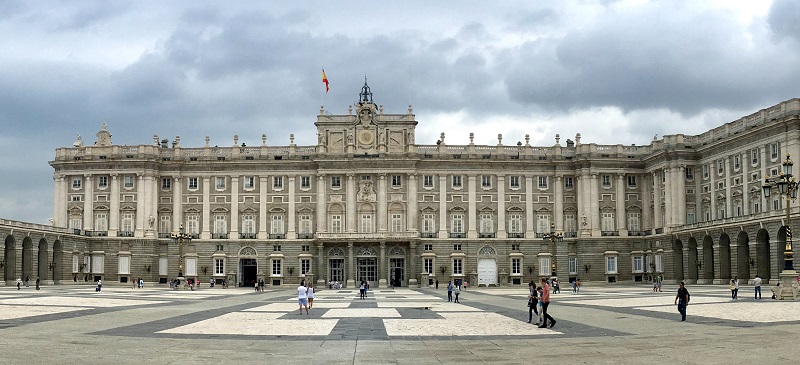
Palacio Real is Spain’s beautiful royal palace, which is still the monarch’s residence and at the same time an interesting museum, where you see many rooms and halls, fine furniture and works of art by i.a. Goya, Rubens and Velázquez.
This is a famous art museum with distinguished collections from the 1200-1900s. You can see works by i.a. Sisley, Miró, Picasso, Rafael, Titian, Tintoretto and Van Dyck.
This museum exhibits modern art from the 20th century to the present day. Here you can e.g. see works by Salvador Dalí and enjoy the famous Guernica by Picasso.
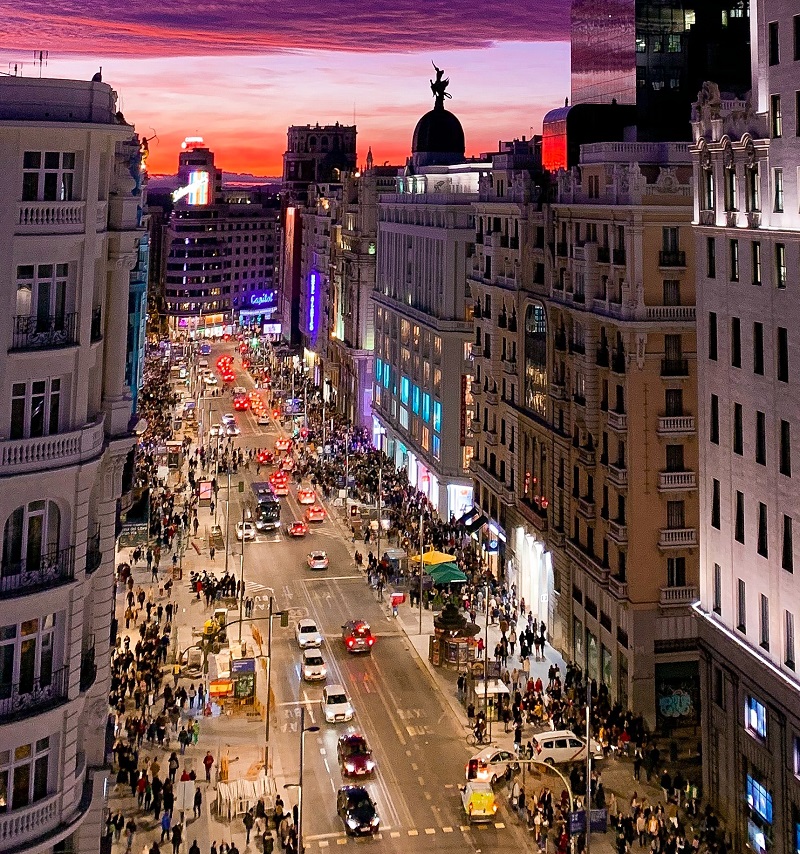
Gran Via is Madrid’s fashionable business street, and it was laid out as a large-scale project in the 1920s between the Plaza de Cibeles and Plaza de España squares. Here are countless beautiful buildings and a good city atmosphere.
The Mercado de San Miguel is a vibrant market housed in a beautiful cast iron building from 1913-1916. Here you can e.g. enjoy Spanish delicacies and gourmet tapas.
This is a Jesuit church, which is one of Madrid’s most famous church buildings. The church was built in the 17th century and was formerly the city’s temporary cathedral.
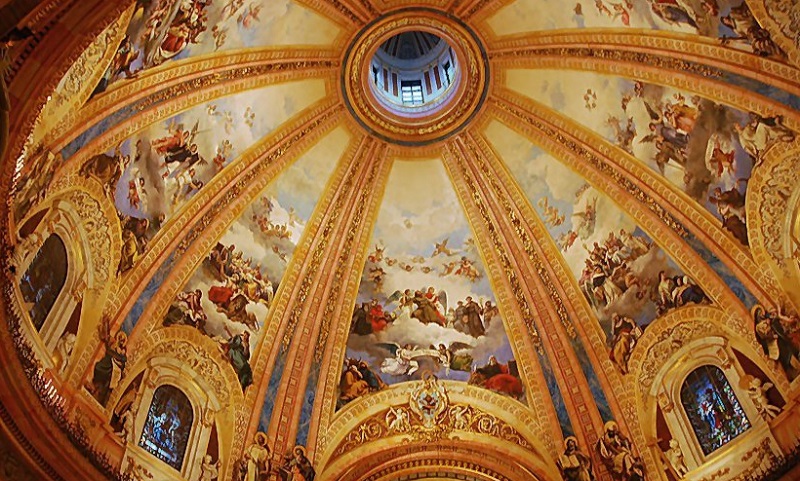
San Francisco el Grande is a beautifully decorated Franciscan church from the 18th century. The large dome impresses and you can see Goya’s painting of Bernadinus of Siena in the church.
The Plaza de Oriente is a magnificent and elegant square built after the Parisian model during Joseph Bonaparte’s reign. You can see a statue of King Philip IV and the city’s Royal Theater in the square.
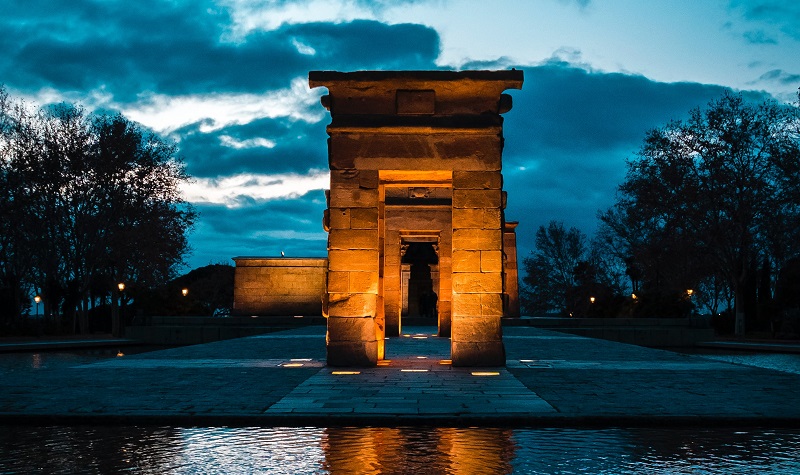
The Templo de Debod is something as special as an original Egyptian temple in the heart of Madrid. It was built in Philea in southern Egypt in the 100s BC. under King Tabriqo and reopened in Madrid in 1981.
This is the National Archaeological Museum of Spain, where there are interesting finds from the entire history of the country. The Treasure of Guarrazar and things from the time of the Moors in the region are some of the great things to be seen here.
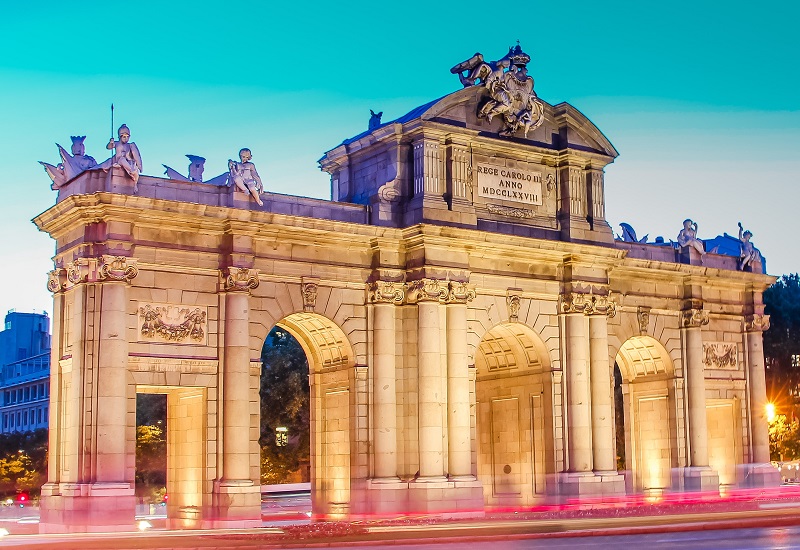
Puerto de Alcalá is an arch located on the Independence Square in Madrid. The arch was built in 1778 under the rule of King Charles III as the first European triumphal arch since the archs of the Roman Empire.
Retiro is the name of an old palace park, which today is one of Madrid’s most popular, green oases. You can see a lot of things in the large park, i.e. a beautiful fountain, lawns, some buildings and the large monument to King Alfonso XII from 1901.
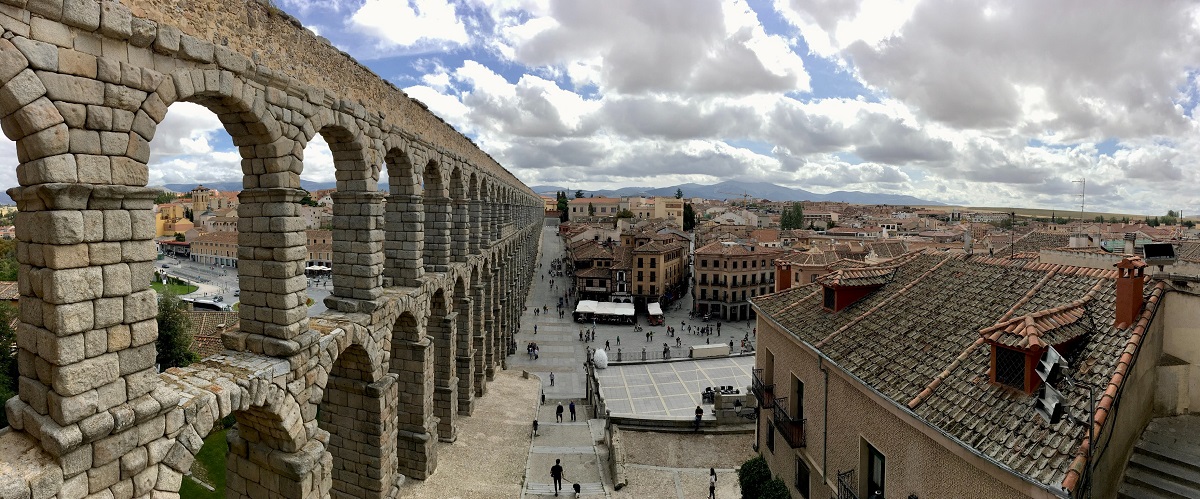
The city of Segovia is an exciting destination with many sights that have made the city center inscribed on the UNESCO World Heritage List. There is a wonderful atmosphere in the city and the most famous monument is Segovia’s Roman aqueduct, which was built around the year 100.
El Escorial is one of the world’s largest castle complexes with an impressive church and a very beautiful location in the Spanish countryside. You can see the impressive buildings and the stately church where most of the Spanish kings are buried.
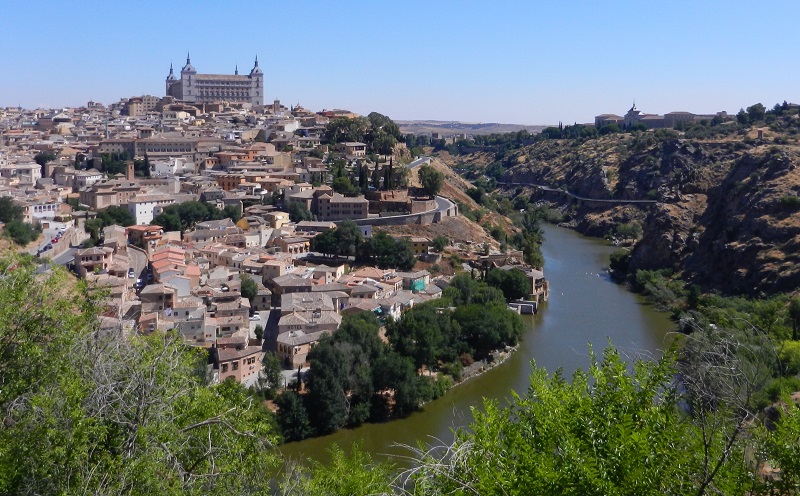
Toledo is a very beautifully situated town, where the old center is located on a small mountain top with the river Tajo below it. Toledo was the Spanish capital before Madrid, and the city center is on the UNESCO World Heritage List. You can see the city’s great cathedral, built through the 13th century to the 15th century, and many other interesting things.
This is a large memorial erected in memory of the many fallen in the 1930s Spanish Civil War. The place is dominated by a 152 meter/500 foot high cross and a large church where Francisco Franco was buried in the years 1975-2019.
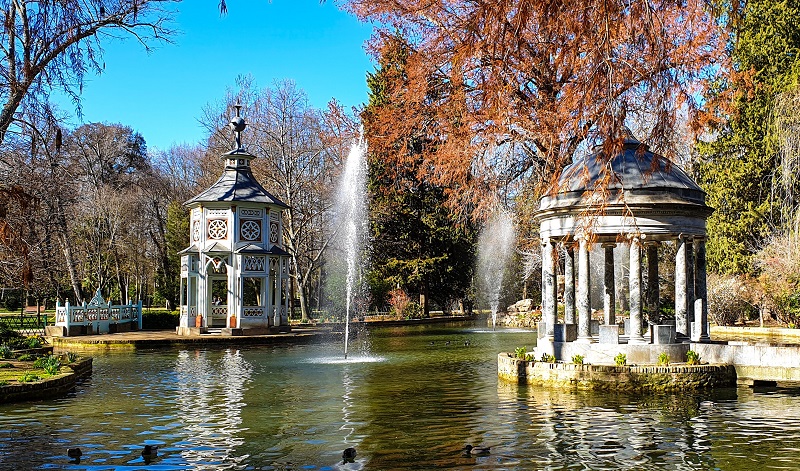
Aranjuez Palace is one of Spain’s most elegant castles. It was built in the 1500-1700s and there are many beautiful things to see in the castle and in the adjoining garden. The Hall of Mirror and the Porcelain Room are among the finest halls, and in the garden there are Italian fountains from the 16th and 17th centuries.
Calle Serrano 61
abcserrano.com
Calle de Arturo Soria 126
arturosoriaplaza.es
Calle Preciados 1-3, Calle de Goya 76 and 85 and Calle Serrano 47 and 52
elcorteingles.es
Calle de Goya 6-8
jardindeserrano.es
Monforte de Lemos 36
enlavaguada.com
Polígono Európolis
mainoutlet.com
Avenida del General Perón 40
modashopping.com
At Autovía A-1
plazanorte2.com
At Autovía A-6
sextavenida.com
At Autovía A-5
millsmadridxanadu.com
Gran Via, Plaza del Callao, Puerto del Sol, Calle Preciados, Calle Fuencarral, Calle Serrano, Calle de Goya
Aquasur
Carretera Andalucía
Aranjuez, 45 km S
Aquopolis, Avenida de la Dahesa
Villaneuva de la Cañada, 35 km W
aquopolis.es
Museo del Aire
Carretera Extremadure
museodelaire.com
Museo del Ferrocarril
Paseo de las Delicias 61
museodelferrocarril.org
Museo Nacional de Ciencias Naturales
Calle José Gutiérrez Abascal 2
mncn.csic.es
Parque de Atracciones
Casa de Campo
parquedeatracciones.es
Safari Park
Carretera de Extremadura
Aldeo del Fresno
Warner Bros. Movie World
San Martin de la Vega, 25 km S
warnerbrospark.com
Zoo Aquarium Madrid
Casa de Campo
zoomadrid.com
The foundation of what was to become Madrid is not known for certain, but it is believed that the Romans established a settlement here in the 100th century BC. The settlement is believed to be called Magerit, which formed the starting point for today’s name Madrid.
After the fall of the Roman Empire, more people came to the area in the middle of the Iberian Peninsula. This applied to both vandals and Visigoths who ruled before the Islamic conquest of the region. It took place in the middle of the 8th century, when the Moors came to rule from Cordoba. They brought fortifications in what they called Mayrit; including a smaller castle in the place where the Spanish royal palace stands today.
The emirate’s emirate remained in the area until the 9th century, when the Castile from the north conquered more and more areas in the Christian re-occupation of the Iberian Peninsula. During Alfonso VI, the Arab Moors were forced to the south, and in 1085 the Castile conquered Madrid. However, the town remained a less significant village at this time, and it remained such a time.
Madrid grew steadily after the reconquest of the 11th century, and it was provided with funds through the Armenian King Levon V, who was granted a Madrid nobility title by Castile’s King Juan I in 1383.
Levon had come to court in the Medina del Campo and was granted the city of Madrid as his life-time property as well as the means to invest. Levon only ruled for a short time, but got construction started that increased Madrid’s importance. Among other things, he expanded the city’s castle.
After a few years, Madrid was hit by a major fire and King Henry III initiated a reconstruction. Madrid thereby maintained its new position as one of Castile’s important cities.
At that time there were two great kingdoms in the Iberian Peninsula; Castile and Aragon. In 1469, they were merged into a kingdom through the marriage of Isabella I of Castile and Ferdinand II of Aragon. Of the pope, they even obtained the title The Catholic Monarchs.
For a time, the following monarchs preferred different cities, but Madrid’s status as a defacto capital was introduced in 1561 by King Felipe II, when he moved to court. That position was the start of the city’s population and general activity increasing dramatically.
With Filipe II’s establishment in Madrid in 1561, the development of the city really took off. Large monuments were erected and the town plan was developed with, for example, the Plaza Mayor square. Thus, the time of the Habsburg royal house has given the city many of the sights to see in today’s Madrid.
With the king and Madrid at the center, Spain was developed, and in the capital, the arts flourished as well. It was a period of economic prosperity that came from, among others, Spain’s great colonial empire in America.
The 17th century was the Spanish Golden Age, the so-called golden century / siglo de oro. Here the art unfolded literary and in the visual arts, and great artists moved to Madrid; eg Cervantes and Velázquez.
The last Habsburg king was Carlos II, who died in the year 1700. His death started the Spanish War of Succession, which ended with France deploying the Bourbons as rulers.
The bourbons clearly initiated French-inspired construction projects, and in the first half of the 18th century larger installations such as the palace palace Real were started. The castle construction started in 1739 under Felipe V, and it was completed during Carlos III’s reign.
New areas were built in Madrid, and the area around the Prado Museum was largely built by Carlos III in the exact 18th century. One example is Puerto del Alcala, which was part of the new city, and in time French architects and consultants frequently participated in the construction work.
Around 1800, there were great thrills in Europe, which in the following years were characterized by the expansionary politics of French Napoleon. This was also the case for Spain, which was involved in the matches of the period.
Spain entered into an agreement with Napoleon in 1807. With the agreement, French troops gained access through Spain to Portugal, which did not want to participate in an international blockade against England.
France used the agreement to enter Spain, which was occupied along the way as troops arrived. Madrid was conquered in 1808, and Napoleon forced the Spanish kings to abdicate in favor of Josef Bonaparte, Napoleon’s brother and Spain’s new king.
As a regent, Josef Bonaparte made his mark on Madrid’s cityscape in the form of the distinguished and French-inspired installation of Plaza Oriente. The model was the elegance of the French capital Paris.
France was forced to retire after a few years, and in 1813 Spanish Fernando VII could be deployed as a new king. In 1820, the king accepted Spain’s first constitution, which made up the monarchy.
Isabella II became regent after Fernando VII in 1833, and the following decades were characterized by changing political directions and several political coups. The political consciousness of Madrid and the rising economic prosperity increased the distance to the monarchy, and in 1873 it culminated with the proclamation of Spain into republic.
However, the regime lasted briefly, and as early as 1875 the monarchy was reinstated. Madrid underwent significant economic progress for several decades, initially without major discrepancies between the ruler and the politicians.
Politically and economically, it went downhill in the reign of Alfonso XIII. The king chose a political solution with the imposition of a dictatorship under Primo de Rivera in 1923. However, the economy continued to decline strongly for the city and the country, and development culminated in 1931, when Spain was again declared republic.
Spain and not least Madrid with its large population was characterized by the same political influences that affected large parts of Europe in the 1930s.
The views of the working class emerged in Madrid in the same year that General Francisco Franco’s nationalist troops occupied an ever larger part of Spain and approached the city during the Spanish Civil War, which erupted in 1936. Madrid was fought until the end of the Spanish Civil War in 1939.
Francisco Franco was deployed as dictator in Spain, and he was to rule the country for more than 35 years. The first years after the end of the Spanish Civil War were financially very tough for Madrid and for Spain. There was war in Europe, while Spain had to be rebuilt in many ways.
For Madrid, construction of large residential areas was initiated during Franco’s time, and large new production facilities were established south of Madrid, together with housing and general expansion.
After Franco’s death in 1975, Juan Carlos was deployed as king, and Madrid again became a royal city. At the same time, democracy was introduced in Spain. The first elections were held in 1977.
Throughout the 1980s, Madrid flourished culturally, and both the city and the country underwent great economic development; through membership of the EC and later the EU. Things were going strong in Madrid, and in 1992 the city was chosen as a European cultural city. This and many other cultural initiatives have been instrumental in forming the charming and beautiful metropolis that visitors experience today.
Overview of Madrid
Madrid is an impressive city and the political center of Spain. The city in the middle of the Iberian Peninsula has been Spain’s unifying political entity for centuries, and the status as an imperial capital for centuries has put its distinct mark on the city with numerous grand buildings, sqaures, monuments and more, with the Royal Palace as one of the absolute highlights.
Tourists can enjoy the blend of magnificent historical greatness and the typical Spanish-Mediterranean atmospheric that is prevailing here. You should not miss out the narrow streets and fine squares of old Madrid near the famous Puerto del Sol and Plaza Mayor. And just next to the old neighborhood, you can stroll Gran Via with all it shopping and distinguished architecture.
About the upcoming Madrid travel guide
About the travel guide
The Madrid travel guide gives you an overview of the sights and activities of the Spanish city. Read about top sights and other sights, and get a tour guide with tour suggestions and detailed descriptions of all the city’s most important churches, monuments, mansions, museums, etc.
Madrid is waiting for you, and at vamados.com you can also find cheap flights and great deals on hotels for your trip. You just select your travel dates and then you get flight and accommodation suggestions in and around the city.
Read more about Madrid and Spain
Buy the travel guide
Click the “Add to Cart” button to purchase the travel guide. After that you will come to the payment, where you enter the purchase and payment information. Upon payment of the travel guide, you will immediately receive a receipt with a link to download your purchase. You can download the travel guide immediately or use the download link in the email later.
Use the travel guide
When you buy the travel guide to Madrid you get the book online so you can have it on your phone, tablet or computer – and of course you can choose to print it. Use the maps and tour suggestions and you will have a good and content-rich journey.
Gran Via • Royal Palace • Plaza Mayor • Prado • Retiro Park
Overview of Madrid
Madrid is an impressive city and the political center of Spain. The city in the middle of the Iberian Peninsula has been Spain’s unifying political entity for centuries, and the status as an imperial capital for centuries has put its distinct mark on the city with numerous grand buildings, sqaures, monuments and more, with the Royal Palace as one of the absolute highlights.
Tourists can enjoy the blend of magnificent historical greatness and the typical Spanish-Mediterranean atmospheric that is prevailing here. You should not miss out the narrow streets and fine squares of old Madrid near the famous Puerto del Sol and Plaza Mayor. And just next to the old neighborhood, you can stroll Gran Via with all it shopping and distinguished architecture.
About the upcoming Madrid travel guide
About the travel guide
The Madrid travel guide gives you an overview of the sights and activities of the Spanish city. Read about top sights and other sights, and get a tour guide with tour suggestions and detailed descriptions of all the city’s most important churches, monuments, mansions, museums, etc.
Madrid is waiting for you, and at vamados.com you can also find cheap flights and great deals on hotels for your trip. You just select your travel dates and then you get flight and accommodation suggestions in and around the city.
Read more about Madrid and Spain
Buy the travel guide
Click the “Add to Cart” button to purchase the travel guide. After that you will come to the payment, where you enter the purchase and payment information. Upon payment of the travel guide, you will immediately receive a receipt with a link to download your purchase. You can download the travel guide immediately or use the download link in the email later.
Use the travel guide
When you buy the travel guide to Madrid you get the book online so you can have it on your phone, tablet or computer – and of course you can choose to print it. Use the maps and tour suggestions and you will have a good and content-rich journey.

Gran Via is Madrid’s fashionable business street, and it was laid out as a large-scale project in the 1920s between the Plaza de Cibeles and Plaza de España squares. Here are countless beautiful buildings and a good city atmosphere.
The Mercado de San Miguel is a vibrant market housed in a beautiful cast iron building from 1913-1916. Here you can e.g. enjoy Spanish delicacies and gourmet tapas.
This is a Jesuit church, which is one of Madrid’s most famous church buildings. The church was built in the 17th century and was formerly the city’s temporary cathedral.

San Francisco el Grande is a beautifully decorated Franciscan church from the 18th century. The large dome impresses and you can see Goya’s painting of Bernadinus of Siena in the church.
The Plaza de Oriente is a magnificent and elegant square built after the Parisian model during Joseph Bonaparte’s reign. You can see a statue of King Philip IV and the city’s Royal Theater in the square.

The Templo de Debod is something as special as an original Egyptian temple in the heart of Madrid. It was built in Philea in southern Egypt in the 100s BC. under King Tabriqo and reopened in Madrid in 1981.
This is the National Archaeological Museum of Spain, where there are interesting finds from the entire history of the country. The Treasure of Guarrazar and things from the time of the Moors in the region are some of the great things to be seen here.

Puerto de Alcalá is an arch located on the Independence Square in Madrid. The arch was built in 1778 under the rule of King Charles III as the first European triumphal arch since the archs of the Roman Empire.
Retiro is the name of an old palace park, which today is one of Madrid’s most popular, green oases. You can see a lot of things in the large park, i.e. a beautiful fountain, lawns, some buildings and the large monument to King Alfonso XII from 1901.
Similar to Madrid Travel Guide